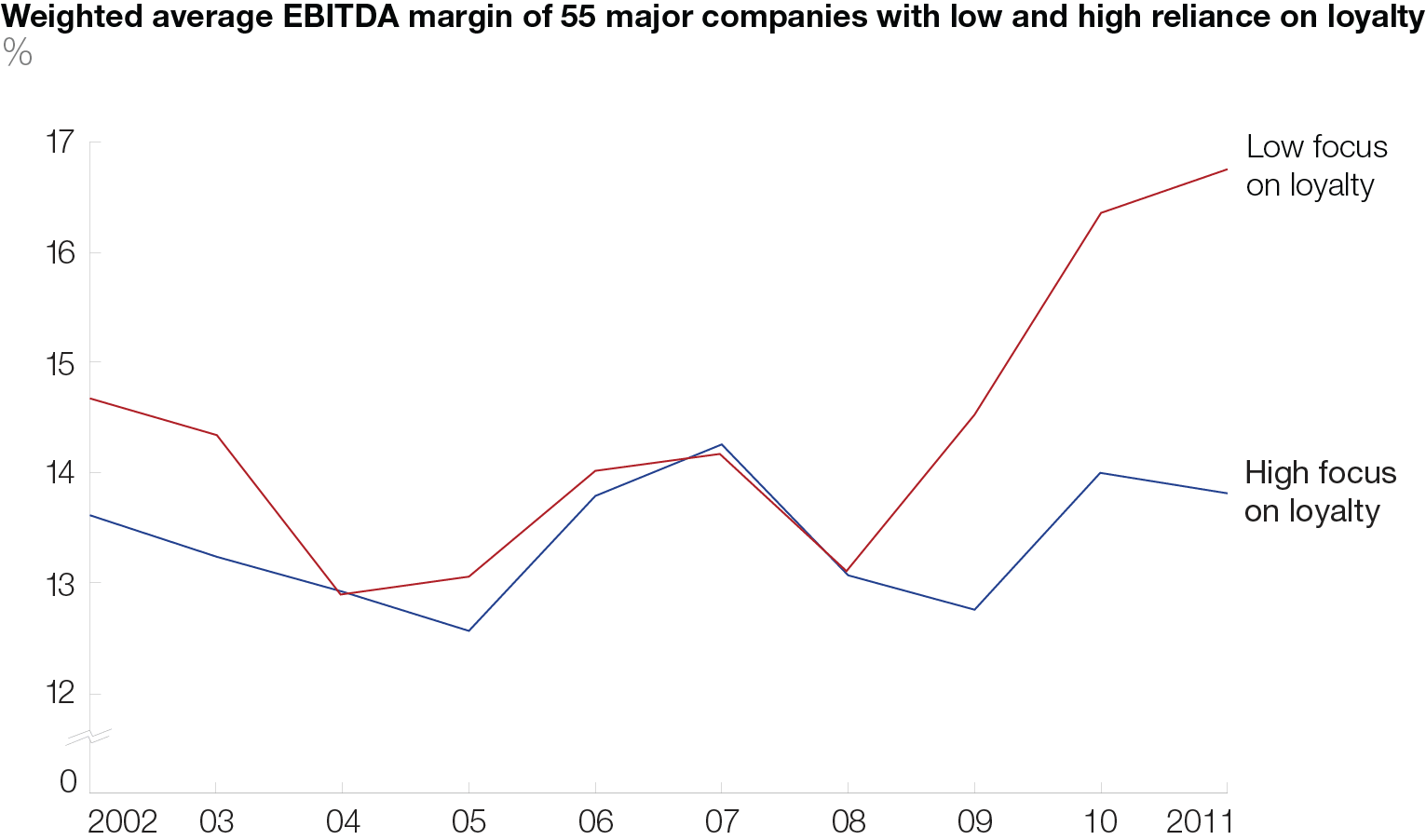Here is an excerpt from an article Written by Marie-Claude Nadeau and Marc Singer for the McKinsey Quarterly, published by McKinsey & Company. To read the complete article, check out others, learn more about the firm, and sign up for email alerts, please click here.
* * *
While the number of loyalty programs has increased, they can often actually destroy value for companies.
In recent years loyalty programs that reward buyers for sticking with the brand have steadily grown in popularity. Between 2008 and 2012, U.S. loyalty memberships increased by 10 percent per year — reaching over 23 memberships per household.
But for all their growth and popularity, do loyalty programs really pay off for the companies that offer them? A recent McKinsey study suggests that on average, they do not — and may in fact destroy value for program owners. The study, involving 55 publically traded North American and European companies, showed that those that spend more on loyalty, or have more visible loyalty programs, grow at about the same rate — or slightly slower — than those that do not (4.4 vs 5.5 percent per year since 2002). Notably, this trend appears to vary by sector, with loyalty focus having a positive impact on hotel growth, but negative impact on airlines, car rentals, and food retail, for example. However, as a whole, companies surveyed that had higher loyalty spend also had EBITDA margins that were about 10 percent lower than companies in the same sectors that spent less on loyalty.
Despite relative underperformance in terms of revenue growth and profitability, over the past five years, market capitalization for companies that greatly emphasize loyalty programs has outpaced that of companies that don’t. This may reflect the hope that meaningful loyalty programs can drive long-term value — and perhaps that data amassed through loyalty programs will pay dividends in due time.

Elements of success
There’s a lot of experimentation going on with loyalty programs right now, but we’ve noticed the more promising and successful ones seem to share some common characteristics.
[Here are the first two.]
Integrate loyalty into the full experience. Loyalty can take many forms besides accruing points or rewards for purchases. Think about all the various customer touchpoints where you could weave it in to enhance the overall purchase and usage experience. For example, Starbucks, the brand that created loyalty by differentiating the ordinary experience of drinking coffee, has also managed to create a strongly differentiated loyalty program. To do this, the company integrated payments and mobile technology with the Starbucks shop experience to make the transaction more enjoyable.
Use the data. The data you collect from loyalty programs can yield critical insights to drive better, and more frequent, marketing and messaging decisions. Mine it regularly and strategically. One larger retailer combines loyalty with a discount program — 5 percent at the point of sale. The chain has moved past the flat “discount-only” model by building out industry- leading data capabilities, using the data to target highest-value consumers. For example, by using data to identify future moms before other retailers do, they are able to provide targeted offers and capture their regular spend as they transform their previous spending habits.
* * *
Here is a direct link to the complete article.